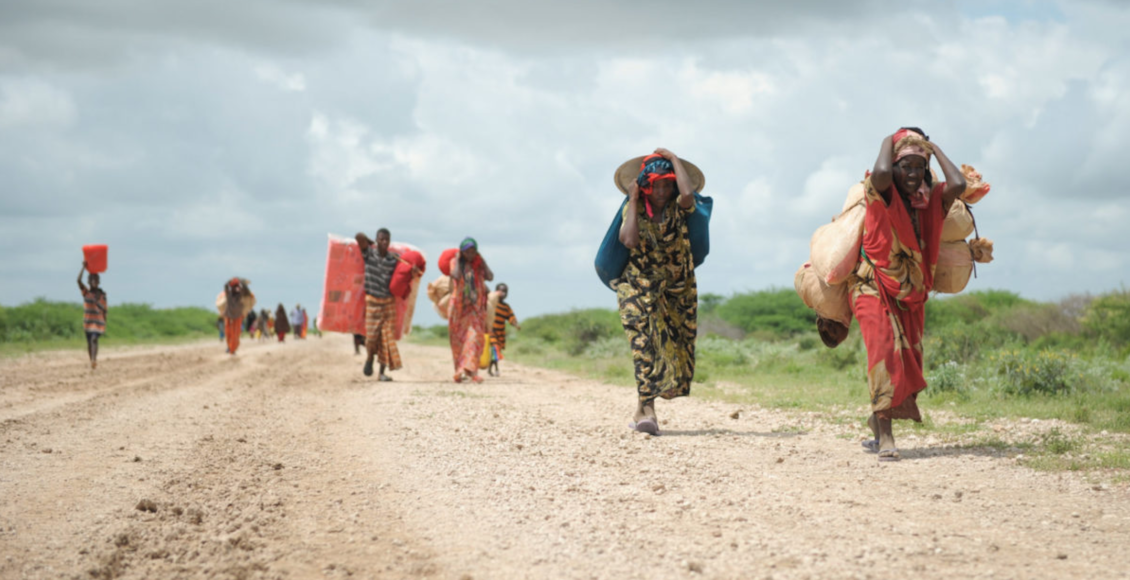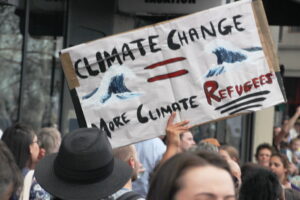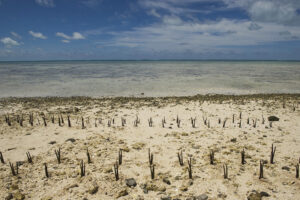Beyond Borders: Confronting the Need for Climate Refugee Protection
A look at the institutional gap of the 1951 Refugee Convention and the climate refugee dilemma.

As the climate crisis intensifies, the UNHCR reports that roughly 90 per cent of refugees come from countries that are the most vulnerable and the least ready to adapt to the impacts of climate change. A new term has emerged to describe this phenomenon: “climate refugee.” It describes the large-scale migration and cross-border movements of people caused by climate, environmental, or weather-related disasters. However, the term is contentious due to its departure from the traditional definition of “refugee,” established in the 1951 Refugee Convention, which primarily safeguards those fleeing persecution. While more individuals are currently being displaced by sudden-onset disasters than by conflict, current refugee definitions and legal frameworks do not account for climate refugees. What are the repercussions of this institutional gap, and why should we be concerned?
The intersection of the climate and refugee crises is grossly underestimated. The Internal Displacement Monitoring Centre reported that an average of 25.3 million displacements have been brought on each year since 2008 by sudden-onset disasters. Forecasts from the Institute for Economics & Peace (IEP) predict that up to 1.2 billion people could be displaced by 2050 due to natural disasters and climate change.

Although the number of climate refugees is expected to increase, there is no international legal recognition for such a group. While the term ”environmental refugees” has been used since the 1970s, the legal status of “climate refugees” remains uncertain. There is a clear protection gap with regard to climate refugees, who are neither clearly defined in legal terms, nor are covered by the 1951 Convention relating to the Status of Refugees. The latter extends only to people who have a well-founded fear of being persecuted on grounds related to race, religion, nationality or membership of a particular social group or political opinion, and are unable or unwilling, owing to fear of persecution, to seek protection from their home countries. This definition does not protect climate refugees, as environmental degradation cannot be considered as persecution according to the 1951 Refugee Convention.
In a 2019 landmark case, Teitiota v. New Zealand, the United Nations Human Rights Committee accepted, in principle, that it is unlawful for states to deport people to places where the impacts of climate change expose them to life-threatening risks or a risk of cruel, inhuman, or degrading treatment. Mr. Ioane Teitiota had sought protection in New Zealand on the basis that life at home in Kiribati became increasingly precarious as a result of insufficient fresh water, overcrowding, inundation, erosion, and land disputes, owing to the effects of climate change and sea-level rise. Claiming to be the world’s first “climate change refugee,” his case caught global attention when he was deported to Kiribati after seeking protection in New Zealand. After lodging a complaint against New Zealand with the Human Rights Committee, the quasi-judicial body stated that “without robust national and international efforts,” the effects of climate change may expose people to life-threatening risks, “thereby triggering the non-refoulement obligations of sending states.”
The case’s ruling was groundbreaking, particularly because of the established precedent of the non-refoulement in a case of climate migration. It is important to note that, in Mr. Teitiota’s case, the Human Rights Committee accepted that sea-level rise was “likely to render the Republic of Kiribati uninhabitable,” potentially within ten to fifteen years. However, the UN Human Rights Committee endorsed the New Zealand tribunal and courts’ reasoning that risks this far into the future were too speculative to give rise to a current protection need. They argue that this timeframe could allow Kiribati, assisted by the international community, “to take affirmative measures to protect and, where necessary, relocate its population.” What is the degree of risk and urgency required for climate refugee claims to be considered legitimate? If climate refugees seek legal avenues, will their claims be met in time? Will the administrative processes be able to adapt to the urgency of their situations?

While there have been calls to update the 1951 Refugee Convention to reflect the urgency of climate change, the solution may not lie in the Convention at all. Dr. Blair Peruniak, who is a lecturer at McGill University’s Institute for the Study of International Development, warns that “if we want to first determine what the gap actually is, we need to determine what kinds of responsibilities and protections there are for persons displaced due to environmental/climate factors. The answer to this question is complex because it relates to everything from internal displacement at the municipal, state, or provincial level to international and regional displacement agreements and even global compacts and refugee governance frameworks. For example, the 2018 Global Compact for Migration (GCM), adopted by 152 member states, has begun to identify and address this particular protection gap in global migration governance with the support of key organizations such as IOM.”
As Peruniak explains, the goal of reforming the 1951 Refugee Convention to accommodate climate displacement may have counterintuitive effects, including the creation of new protection gaps: “Reforming the 1951 Convention to better reflect environmental dimensions of displacement comes with many risks: there are those who would like to open the Convention to “reforms” in order to water down or backslide on existing commitments. Scholars who are concerned about this often come across as conservative because they seem to reject the notion of progressive reform when, in fact, they may be concerned that once the door is open to reform, the actual reforms will not be very progressive and it might be better to look for new agreements or agencies to deal with emerging problems such as climate change in order to avoid this.”
To adequately address this legal and institutional gap, we may not need to solely turn to the 1951 Convention, but rather more local, and national refugee-frameworks, as they may hold more power and influence for addressing climate refugee arrivals “on-the-ground.” While the term “climate refugee” is contested, the demographic has been recognized by the 2018 Global Compact on Safe, Orderly, and Regular Migration (GCM) under its Objective 2. The Compact aimed to protect the rights of those displaced and help address the root economic, environmental, and social drivers compelling people to leave their countries. While the Compact calls on governments to take action to help climate refugees in their host countries, the current text lacks actionable commitments to control the numerous human-made forces underlying global mass migration. The Compact also encourages states to create more flexible migration programs, including humanitarian visas, private sponsorships, access to education for children, and temporary work permits for those compelled to leave on account of “sudden-onset natural disasters and other precarious situations.” They also suggest “planned relocation and visa options” for those forced to leave on account of “slow-onset natural disasters, the adverse effects of climate change, and environmental degradation.”
With the inadequacy of current international migration regimes to protect climate refugees, individual states must prepare strategies and policies to adapt to this evolving reality. We may need to establish a UN agency to address the issue of climate displacement as well as expand new programs and legal mechanisms to assist individuals fleeing on the basis of environmental disasters. The drivers of displacement are typically multi-causal, which means that disasters, conflict, and persecution are often interconnected. As the drivers of displacement become increasingly intertwined, the global refugee regime must evolve to safeguard human rights in all contexts.
Edited by Joseph Pappas.
Featured Image: “Women, walking with what possessions they can carry, arrive in a steady trickle at an IDP camp erected next to an AMISOM military base near the town of Jowhar, Somalia.” 2013 11_12_Jowhar_Flood_H” by Tobin Jones licensed under CC0 1.0 DEED.”
